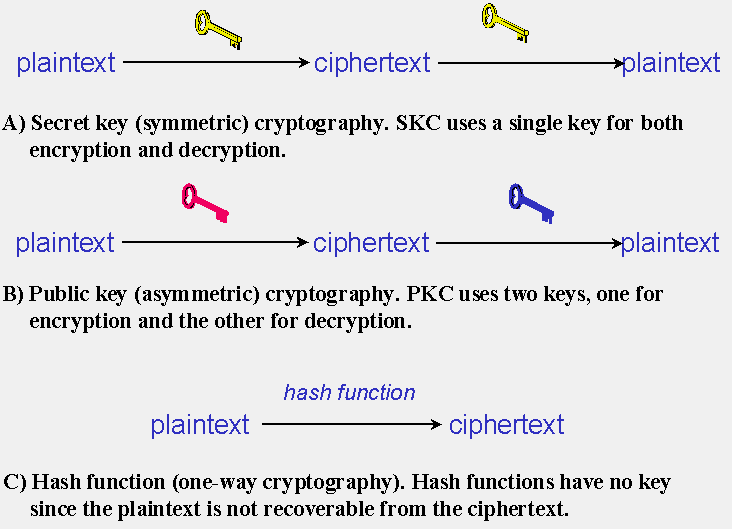Data Cryptographic System
(Redirected from cryptosystem)
Jump to navigation
Jump to search
A Data Cryptographic System that is a data transformation system that implements a data cryptographic algorithm to solve a data cryptographic task.
- AKA: Cryptosystem, Data Encryption-Decryption System.
- Context:
- It can range from being a Data Encryption System to being a Data Decryption System.
- It can range from being a Hash Function System, to being a Secret Key Cryptography (SKC) System, to being a Public Key Cryptography (PKC) System.
- Example(s):
- Counter-Example(s):
- See: SSH, Public Key Infrastructure (PKI), Cold Boot Attack, Cyberspace Electronic Security Act, Geoblocking, Data Erasure, Information Security, Hash Function, Decentralized Online Social Network.
References
2021a
- (Kessler, 2021) ⇒ Gary C. Kessler (2021)."2. Basic Concepts Of Cryptography". In: "An Overview of Cryptography".
- QUOTE: There are five primary functions of cryptography:
- 1.Privacy/confidentiality: Ensuring that no one can read the message except the intended receiver.
- 2. Authentication: The process of proving one's identity.
- 3. Integrity: Assuring the receiver that the received message has not been altered in any way from the original.
- 4. Non-repudiation: A mechanism to prove that the sender really sent this message.
- 5. Key exchange: The method by which crypto keys are shared between sender and receiver.
- QUOTE: There are five primary functions of cryptography:
- In cryptography, we start with the unencrypted data, referred to as plaintext. Plaintext is encrypted into ciphertext, which will in turn (usually) be decrypted back into usable plaintext. The encryption and decryption is based upon the type of cryptography scheme being employed and some form of key. For those who like formulas, this process is sometimes written as:
$C = E_k(P)$
$P = D_k(C)$
- where $P$ = plaintext, $C$ = ciphertext, $E$ = the encryption method, $D$ = the decryption method, and $k$ = the key.
2021b
- (Kessler, 2021) ⇒ Gary C. Kessler (2021)."3. Types Of Cryptographic Algorithms". In: "An Overview of Cryptography".
- QUOTE: There are several ways of classifying cryptographic algorithms. For purposes of this paper, they will be categorized based on the number of keys that are employed for encryption and decryption, and further defined by their application and use. The three types of algorithms that will be discussed are (Figure 1):
- Secret Key Cryptography (SKC): Uses a single key for both encryption and decryption; also called symmetric encryption. Primarily used for privacy and confidentiality.
- Public Key Cryptography (PKC): Uses one key for encryption and another for decryption; also called asymmetric encryption. Primarily used for authentication, non-repudiation, and key exchange.
- Hash Functions: Uses a mathematical transformation to irreversibly "encrypt" information, providing a digital fingerprint. Primarily used for message integrity.

|